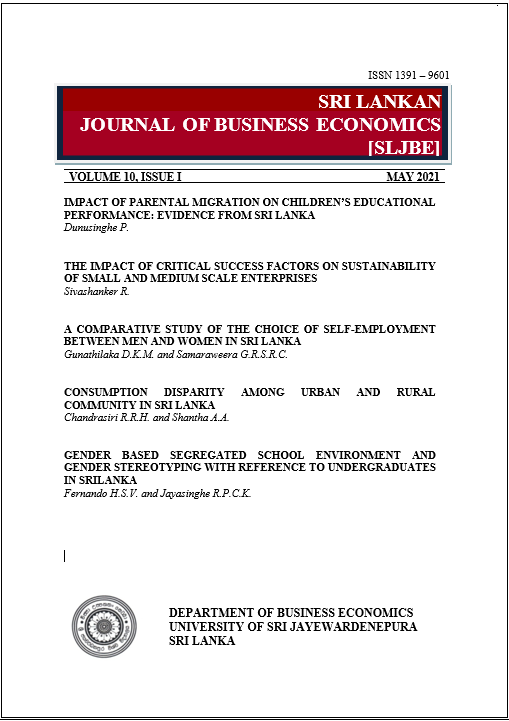CONSUMPTION DISPARITY AMONG URBAN AND RURAL COMMUNITY IN SRI LANKA
Abstract
Consumption disparity is considered a global issue and it can be seen in Sri Lankan sphere too. This study investigates the consumption disparity among urban and rural communities in Sri Lanka. The main objective of this research is to explore the degree of consumption disparity within and between urban and rural settings in Sri Lanka. This is a quantitative analysis based on the collection of primary data. The survey included 166 families. The household income and expenditure data were collected for the survey through a structured questionnaire. The analysis was conducted using multiple linear regression while the Gini coefficient and Lorenz curve were used to identify the inequality level between urban and rural communities. As per the results of the study, consumption disparity between the sectors accounted for 0.61 Gini coefficient. Under the comparison analysis, a significant difference was identified in all the selected variables for the analysis. In conclusion, this study found factors which affect consumption disparity. Household heads age, education level, gender and household wealth, savings, and borrowings are the factors that created a significant influence for consumption disparity. The study highlighted the importance of financial encouragement of the breadwinner and it significantly impacts in minimizing consumption disparity at household level. In order to reduce the degree of inequality, the government should take measures to develop rural infrastructure, education, and health
services around the same level similar to the urban sector.
Keywords: Consumption Disparity, Urban, Rural, Gini Coefficient, Sri Lanka

